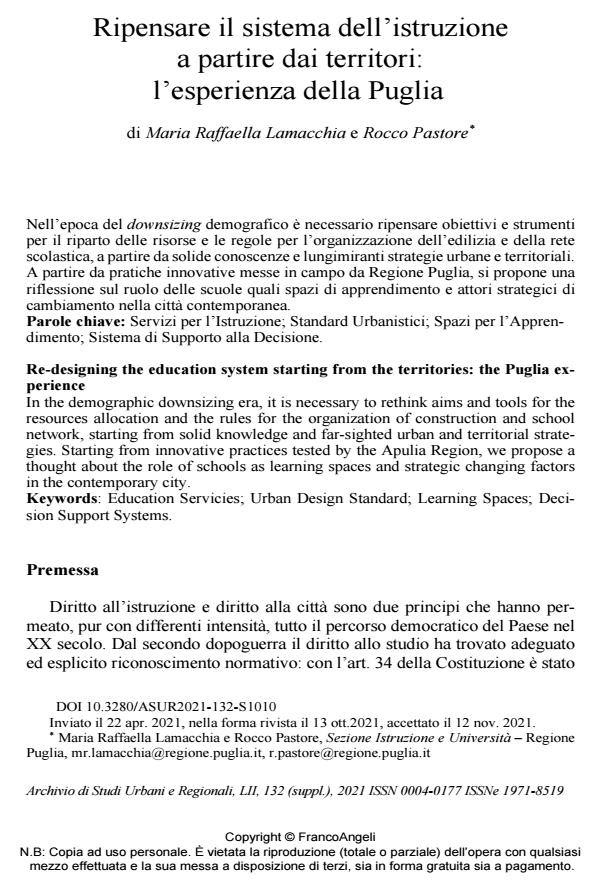Re-designing the education system starting from the territories: the Puglia experience
Journal title ARCHIVIO DI STUDI URBANI E REGIONALI
Author/s Maria Raffaella Lamacchia, Rocco Pastore
Publishing Year 2022 Issue 2021/132 Suppl.
Language Italian Pages 18 P. 154-171 File size 1751 KB
DOI 10.3280/ASUR2021-132-S1010
DOI is like a bar code for intellectual property: to have more infomation
click here
Below, you can see the article first page
If you want to buy this article in PDF format, you can do it, following the instructions to buy download credits

FrancoAngeli is member of Publishers International Linking Association, Inc (PILA), a not-for-profit association which run the CrossRef service enabling links to and from online scholarly content.
In the demographic downsizing era, it is necessary to rethink aims and tools for the resources allocation and the rules for the organization of construction and school network, starting from solid knowledge and far-sighted urban and territorial strate-gies. Starting from innovative practices tested by the Apulia Region, we propose a thought about the role of schools as learning spaces and strategic changing factors in the contemporary city.
Keywords: Education Servicies; Urban Design Standard; Learning Spaces; Deci-sion Support Systems.
Maria Raffaella Lamacchia, Rocco Pastore, Ripensare il sistema dell’istruzione a partire dai territori: l’esperienza della Puglia in "ARCHIVIO DI STUDI URBANI E REGIONALI" 132 Suppl./2021, pp 154-171, DOI: 10.3280/ASUR2021-132-S1010